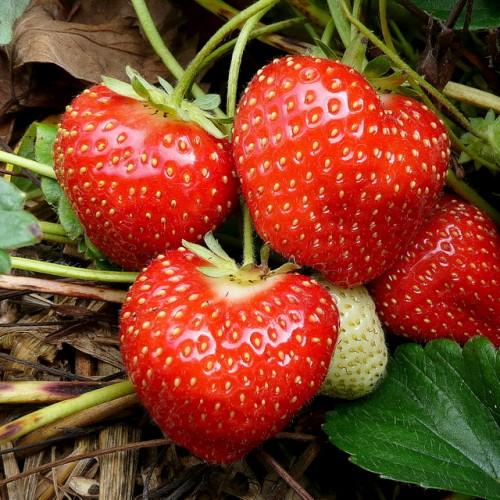
junebearing strawberry
Fragaria ananassa BERRIES GALORE
Cycle:
Perennial
Watering:
Average
Hardiness Zone:
5 - 8
Flowers:
Flowers
Sun:
Full sun
Fruits:
Fruits Ready In Summer
Edible:
Yes
Leaf:
Yes
Growth Rate:
High
Maintenance:
High
Care Level:
Medium
watering
Junebearing strawberries need to be watered deeply with 1-2 inches of water per week, especially when the plant's berries begin to ripen late in the season. Watering should take place in the morning so that the foliage has enough time to dry before nightfall, which can help reduce risks of disease. During hot summer days, the plants may need supplemental water to help maintain healthy foliage and optimal fruit production. It’s best to avoid overhead watering, as this can lead to unsightly fungal disease on the leaves. Instead, use a soaker hose system or focus on providing water near the base of the plant.
sunlight
Junebearing strawberry plants need about 8 hours of direct sunlight each day to thrive and produce an abundant harvest of ripe, juicy berries. Full sun is best, although some partial shade in the afternoon may be beneficial in very hot summer areas. If possible, try to plant the strawberries where they will receive full morning sun and some shade by midday. Water regularly, as strawberries require consistently moist soil to ensure optimal plant health and berry production. Typically, a 1-inch application of water per week is sufficient.
pruning
Pruning junebearing strawberry plants (Fragaria ananassa BERRIES GALORE) should be done once or twice a year. In the spring, the plants should be pruned back to about 6 to 8 inches above the soil surface. This helps to reduce the spread of diseases and encourages the formation of new shoots and flowers. In the late summer or early fall, the plants should be pruned again to remove any dead or broken shoots, as well as old, woody branches. The dead or broken branches can make the plants more susceptible to diseases and pests.Finally, it is important to remove any fruit that has been damaged or diseased in order to prevent more serious damage from spreading.
